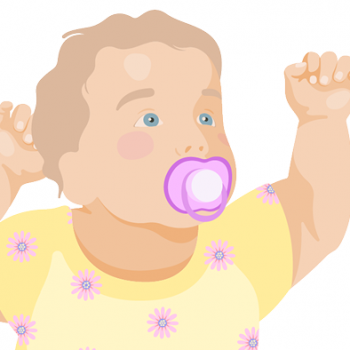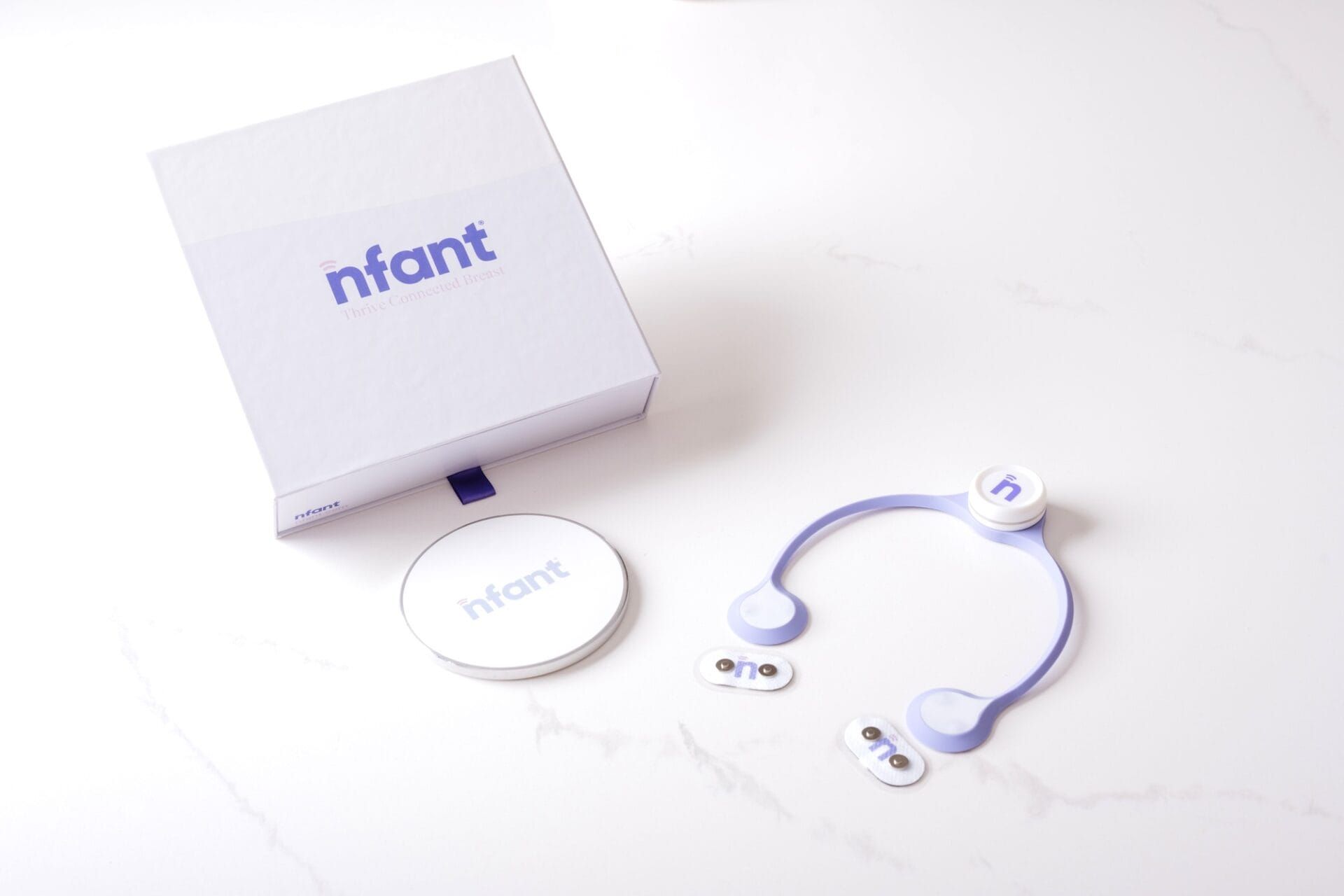Trust your instincts — with a little help from us
From the second your baby is born, you start connecting with each other through expression, touch, words and actions. Your newborn will use facial expression and movements to not only get your attention, but to tell you what they need and when.
Here at nfant, we developed a feeding approach that trains new and even experienced parents to tune into their baby’s unique needs. We believe that parents can achieve the most feeding success when they learn to decode their baby’s language, spoken through a series of hunger, stress and sleep cues that any caregiver can learn to spot.

Connected Feeding
We coined the term Connected FeedingTM to describe how a cue-based approach to feeding works with our innovative technology. We do more than teach parents and caregivers how to identify, recognize and respond to their baby’s feeding cues. We amplify and enhance your observations with real-time biofeedback data to help you measure milk volume when breastfeeding, determine if bottle feeding is going well and see how your baby responds to changes and interventions.
So, while you are connecting emotionally with your baby, our nfant Thrive Feeding System adds the first smart feeding technology to today’s connected nursery. For the first time, we are removing the guesswork from feeding by giving parents a data-based gut check in the form of feeding data sent wirelessly to an app on your phone, where it is stored and analyzed to maximize feeding success.
Reading Your Baby’s Cues:
How Babies Communicate
The idea that babies use crying to communicate hunger is one of the most widespread misconceptions today about infant feeding. It’s highly prevalent among new and experienced parents, and even perpetuated by some well-meaning but uninformed medical professionals.
In fact, babies do not cry when they start to get hungry; they cry when they are very hungry and distressed. A crying baby probably showed earlier, more subtle signs of hunger before they started to cry. And once a baby starts crying, it can be much more difficult to help them settle down, let alone initiate a positive feeding experience.
Common Infant Hunger Cues

Sucking

Hands to Mouth

Alertness

Crying

Turning to Breast or Bottle

Tongue/Mouth Movements

What is a Stress Cue?
If your baby cries during feedings, pulls away from the breast or nipple or appears unhappy, you may feel unsure how to respond. You may also worry that you are doing something wrong.
These stress cues are signs from your baby that something about the experience of feeding is not going well, not that you are incapable of feeding your baby. Just like hunger cues, stress cues are movements and expressions that your baby uses as a form of nonverbal communication. In many cases, these cues could be signals that your baby is uncomfortable (and needs a different feeding position), that your nipple flow rate is too fast or that your baby is not ready to feed yet.
Fortunately, the feeding experience is something you can tweak and adapt to meet your baby’s unique needs. The first step is learning to read and understand your baby’s language.
Common Infant Stress Cues

Spread fingers (finger splaying)
Arched back
Grimacing

Gagging or leaking milk
Irregular breathing
Pulling away
Reading Your Baby’s Cues:
How Babies Communicate
The idea that babies use crying to communicate hunger is one of the most widespread misconceptions today about infant feeding. It’s highly prevalent among new and experienced parents, and even perpetuated by some well-meaning but uninformed medical professionals.
In fact, babies do not cry when they start to get hungry; they cry when they are very hungry and distressed. A crying baby probably showed earlier, more subtle signs of hunger before they started to cry. And once a baby starts crying, it can be much more difficult to help them settle down, let alone initiate a positive feeding experience.
Common Infant Hunger Cues

Sucking

Hands to Mouth

Alertness

Crying

Turning to Breast or Bottle

Tongue/Mouth Movements

What is a Stress Cue?
If your baby cries during feedings, pulls away from the breast or nipple or appears unhappy, you may feel unsure how to respond. You may also worry that you are doing something wrong.
These stress cues are signs from your baby that something about the experience of feeding is not going well, not that you are incapable of feeding your baby. Just like hunger cues, stress cues are movements and expressions that your baby uses as a form of nonverbal communication. In many cases, these cues could be signals that your baby is uncomfortable (and needs a different feeding position), that your nipple flow rate is too fast or that your baby is not ready to feed yet.
Fortunately, the feeding experience is something you can tweak and adapt to meet your baby’s unique needs. The first step is learning to read and understand your baby’s language.
Common Infant Stress Cues

Spread fingers (finger splaying)
Arched back
Grimacing

Gagging or leaking milk
Irregular breathing
Pulling away
Connected Feeding with nfant
While you are connecting emotionally with your baby, our nfant Thrive Feeding System adds the first smart feeding technology to today’s connected nursery. For the first time, we are removing the guesswork from feeding by giving parents a data-based gut check in the form of feeding data sent wirelessly to an app on your phone, where it is stored and analyzed to maximize feeding success.
The nfant Thrive Tracker App can also be used without our connected devices simply to track feedings, record daily intake of formula or breastmilk and access in-depth guides and tips for using our Connected Feeding program.


nfant Thrive Breast
A first-of-its-kind wearable that helps you understand your milk flow—without any invasive tools.
- See how much milk your baby is getting and when
- Feel more confident in your breastfeeding journey
- Get support to continue breastfeeding longer
- Share clear, data-backed insights with your lactation consultant
nfant Thrive Bottle
The only FDA-cleared bottle that shows how your baby’s tongue is moving during feeding.
- Understand your baby’s feeding skills, strength, and coordination
- See in real time how changes (like positioning or nipples) help
- Use nfant® Control Flow Nipples to ensure a smooth, consistent flow of breast milk, formula, or thickeners







